Written by Junnun Mojumder
Looking to bring a touch of nature into your home despite limited space? Gardening on balconies in apartments is a fantastic way to transform your balcony into a vibrant, green oasis. Not only does it enhance your living space, but it also provides therapeutic benefits, promotes freshness, and adds a sustainable touch to urban living.
Even small balconies can host a variety of plants that thrive in compact areas. In this guide, we’ll explore 8 perfect plants for apartment balcony gardening and share tips on how to care for them effectively and successfully.
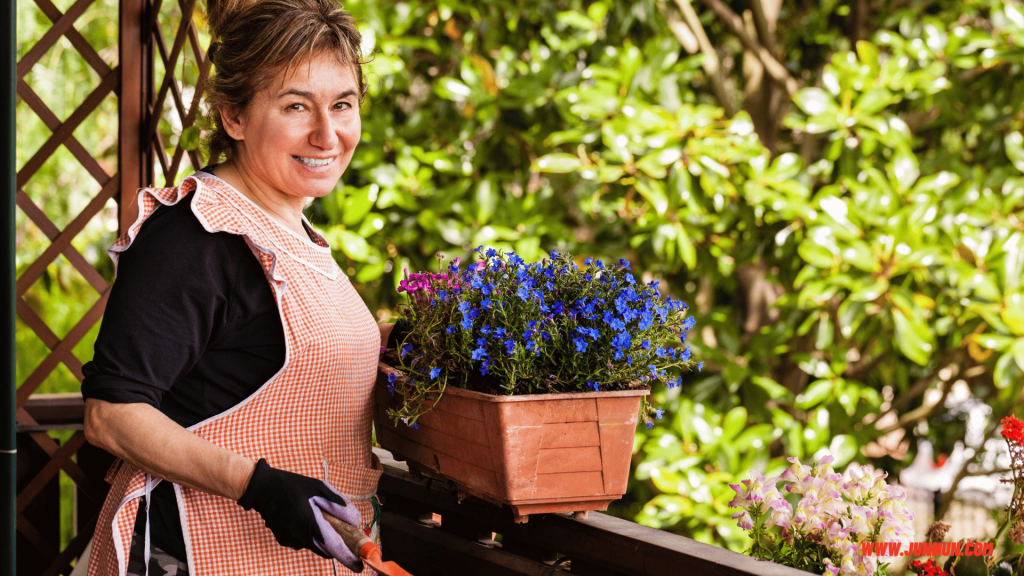
Table of contents:
- Herbs
- Succulents
- Tomatoes
- Strawberries
- Petunias
- Lavender
- Chilli Peppers
- Ferns
- Conclusion
1. Herbs (Basil, Mint, Parsley, and Thyme)
Herbs are plants known for their aromatic leaves, which are used for flavouring food, medicinal purposes, and natural remedies. Common herbs like basil, mint, and rosemary offer various health benefits, including aiding digestion, reducing inflammation, and boosting immunity.
They are essential in culinary and holistic practices, and growing them at home makes it easy to enjoy fresh flavours and health benefits even in small spaces.
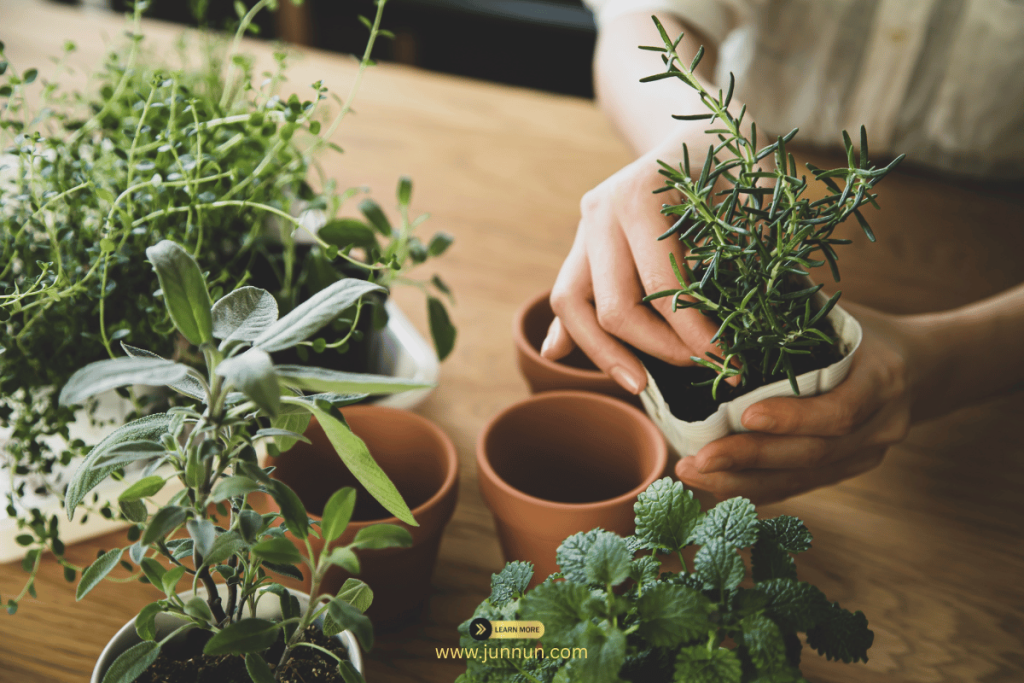
- Provide Adequate Sunlight: Herbs such as basil, thyme, and rosemary require 4 to 6 hours of sunlight each day. Position them on a sunny balcony or windowsill to promote growth. With a little planning, gardening on balconies in apartments can be a rewarding way to enjoy fresh herbs right at home.
- Use Well-Draining Soil: Herbs thrive in well-draining soil to prevent root rot. Use a quality potting mix that contains perlite or sand, and ensure that pots have drainage holes for healthy growth and strong roots.
- Water Regularly, But Not Excessively: Herbs thrive in evenly moist soil, but it’s important to avoid overwatering. Water only when the top inch of soil feels dry to the touch, preventing soggy conditions that can lead to root problems.
- Prune Regularly: Regular pruning promotes healthy growth and prevents legginess. Trim stem tips and frequently harvest leaves to encourage fuller, bushier herb plants.
- Fertilise Sparingly: Herbs need light feeding. Apply a balanced, slow-release fertiliser or organic compost every 4 to 6 weeks to provide essential nutrients without overwhelming delicate plants.
Pro Tip: These tips will help you grow vibrant, flavorful herbs in your balcony garden!
2. Succulents (Aloe Vera, Jade Plant, and Echeveria)
Succulents are resilient plants characterised by thick, fleshy leaves that store water, enabling them to tolerate drought conditions.
They are popular due to their low maintenance requirements and come in a variety of shapes, sizes, and colours. Common varieties include aloe, jade, and echeveria, which are often used in balcony gardening in apartments and home decor, appreciated for their unique beauty, versatility, and ability to brighten indoor and outdoor spaces effortlessly.
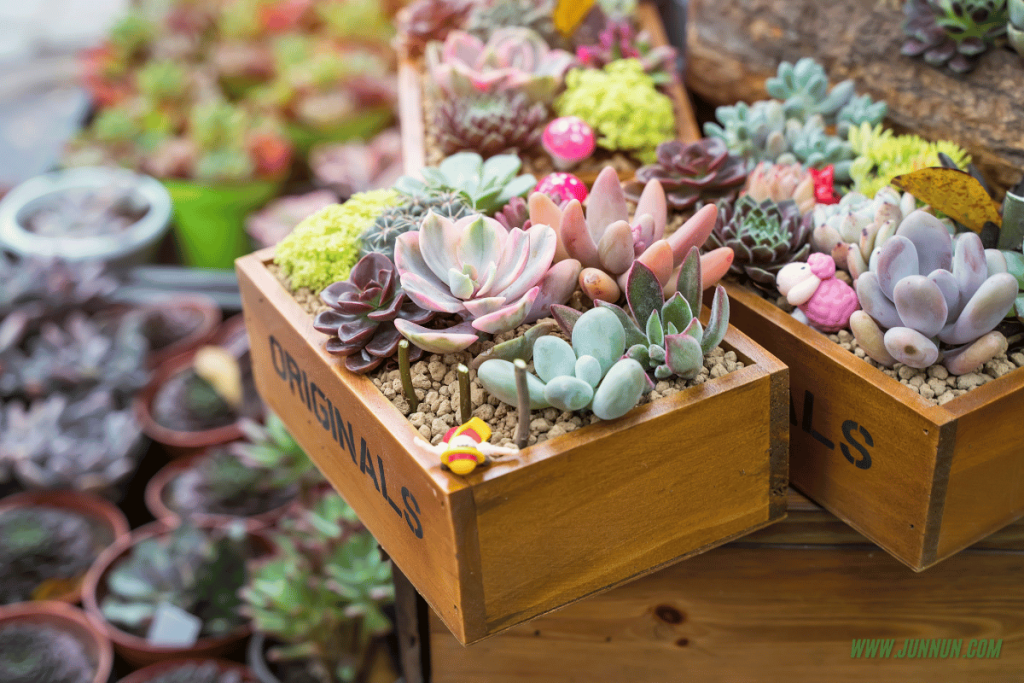
- Provide Plenty of Sunlight: Succulents thrive in bright, indirect sunlight. Place them in a sunny spot, such as a south- or west-facing window, where they can receive at least 4 to 6 hours of light daily.
- Water Sparingly: Succulents are drought-tolerant and prefer to dry out between waterings. Water your plant deeply but infrequently, ensuring the soil is completely dry before watering again to prevent root rot.
- Use Well-Draining Soil: To avoid waterlogging, succulents need fast-draining soil. Use a cactus or succulent-specific potting mix or regular potting soil with sand or perlite to improve drainage.
- Ensure Proper Pot Drainage: Always plant succulents in pots with drainage holes. This helps excess water escape and prevents the roots from sitting in stagnant water, which can lead to rot.
- Avoid Overcrowding: Succulents need space to grow. Avoid cramming them into small containers, as overcrowding can lead to poor air circulation and fungal issues.
Pro Tip: Following these tips, your succulents will thrive and add beauty to your balcony or home.
3. Tomatoes
Tomatoes are versatile, juicy fruits commonly used in cooking. They come in various colours, including red, yellow, and green, and are rich in vitamins, especially vitamin C. Tomatoes are essential in salads, sauces, and dishes worldwide, offering flavour and nutritional benefits.
Growing them successfully is one of the top gardening tips for healthy and productive home gardens, making it possible to enjoy fresh, homegrown tomatoes even in small spaces.
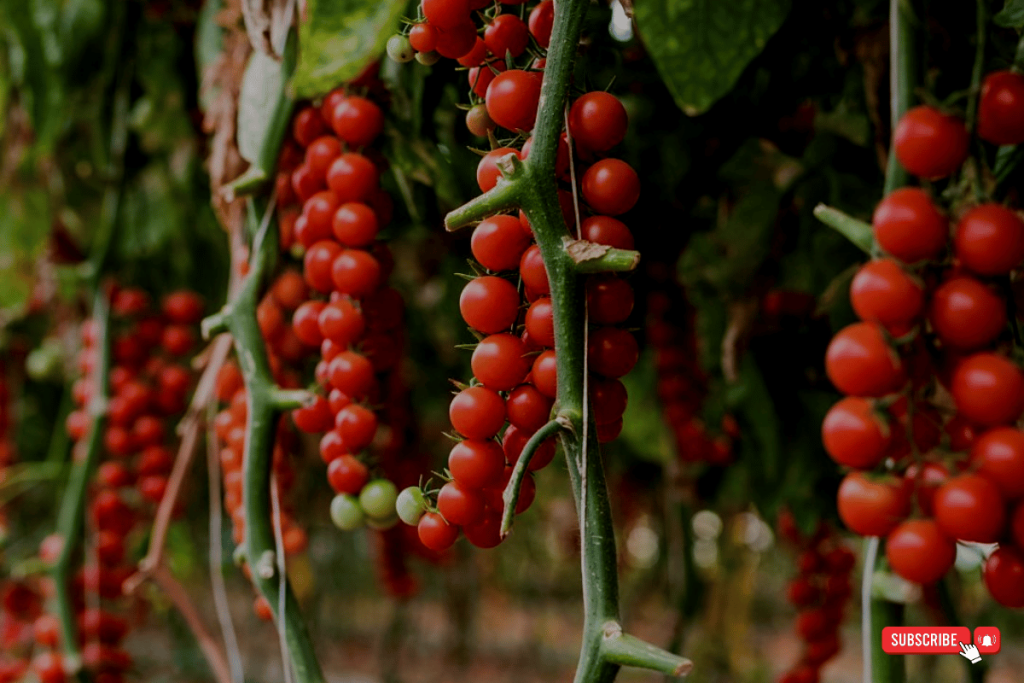
- Provide Plenty of Sunlight: To produce healthy fruit, tomatoes need at least 6-8 hours of direct sunlight daily. Choose a sunny spot on your balcony or windowsill to ensure optimal growth.
- Water Consistently: Keep the soil consistently moist, but avoid overwatering. Water at the base of the plant prevents water from splashing on the leaves, which can encourage disease. Ensure good drainage in your pots to avoid waterlogging.
- Support with Stakes or Cages: As tomato plants grow, they need support. Use stakes, tomato cages, or trellises to keep the plant upright and prevent the stems from breaking under the weight of the fruit.
- Fertilise Regularly: Use a balanced fertiliser every 2-3 weeks to provide essential nutrients for strong growth. During the flowering and fruiting stage, switch to a fertiliser higher in potassium and phosphorus to encourage better fruit production.
- Prune and Remove Suckers: Regularly prune your tomato plants by removing suckers (small shoots that grow between the main stem and branches). This helps focus the plant’s energy on producing fruit and improves airflow.
Pro Tip: Following these tips, you’ll enjoy a healthy, productive tomato plant with plenty of delicious fruits!
4. Strawberries
Strawberries are sweet, red, and juicy fruits known for their vibrant colour and delicious flavour. Rich in vitamin C and antioxidants, they are commonly eaten fresh, added to desserts, or used in smoothies.
Strawberries are also an excellent choice for gardening on balconies in apartments, making them a popular and healthy treat enjoyed worldwide, while providing a rewarding gardening experience and fresh, homegrown fruit for small spaces.
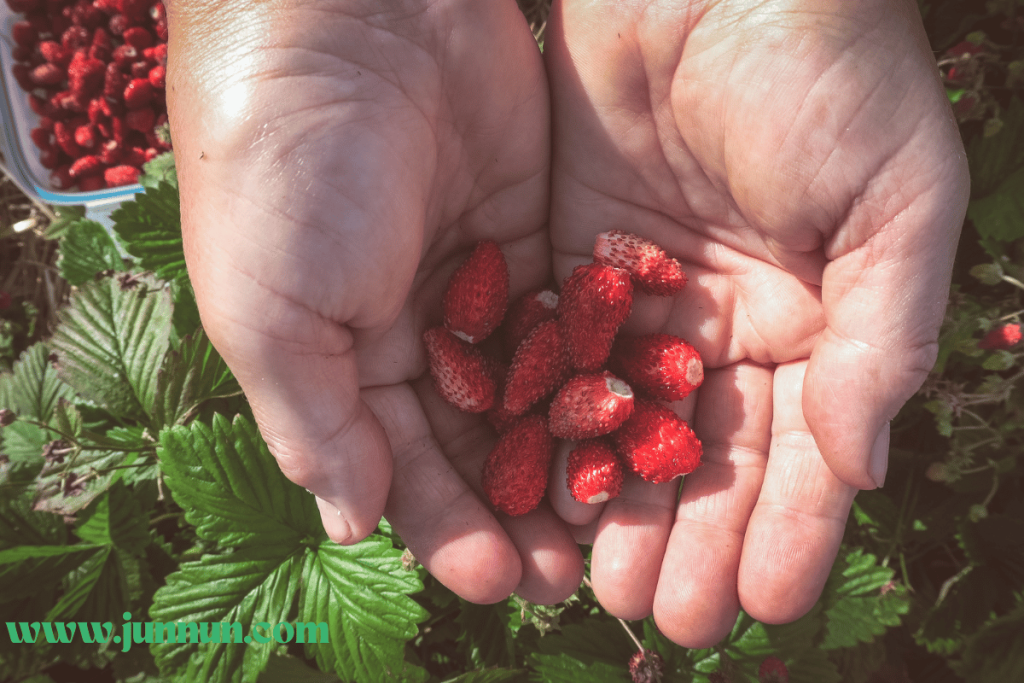
- Water Consistently: Keep the soil consistently moist but not waterlogged. Water the plants at the base to prevent wetting the leaves, which can encourage fungal diseases. Ensure your containers have good drainage to avoid root rot.
- Use Well-Draining Soil: Strawberries prefer well-draining, slightly acidic soil. Use a high-quality potting mix with added organic matter, or a specific strawberry mix to provide the right nutrients and drainage for healthy roots.
- Fertilise Regularly: Feed your strawberries with a balanced fertiliser every 4-6 weeks, especially during the growing season. Once they start flowering and fruiting, switch to a low-nitrogen fertiliser to encourage more fruit production.
- Mulch and Protect: Apply a layer of mulch around your strawberry plants to help retain moisture, suppress weeds, and keep the fruit clean. You can also cover the plants with netting to protect the berries from birds and other pests. With simple methods like these, it becomes easy to grow fresh strawberries even in limited spaces.
Pro Tip: Follow these tips to enjoy a bountiful harvest of sweet strawberries right from your balcony garden!
5. Petunias
Petunias are colourful, vibrant flowering plants commonly used in gardens and hanging baskets. Known for their trumpet-shaped flowers in shades of pink, purple, and white, they thrive in sunny locations.
Petunias are low-maintenance, attract butterflies, and are perfect for gardening on balconies in apartments, adding beauty to outdoor spaces while brightening the surroundings, uplifting mood, and creating a cheerful, lively atmosphere effortlessly.
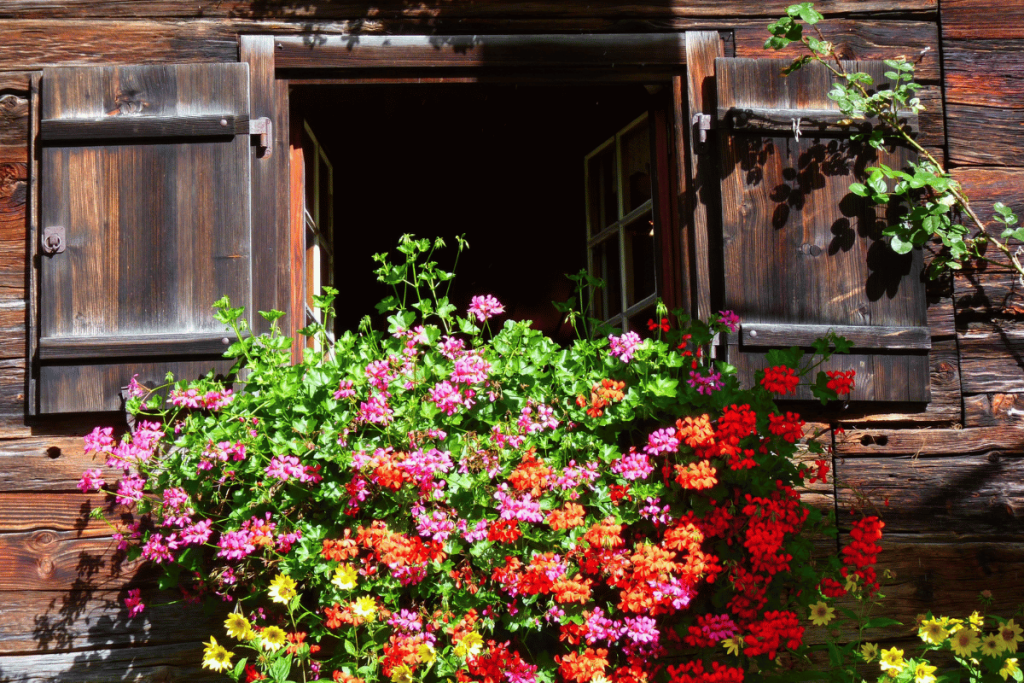
- Provide Plenty of Sunlight: Petunias thrive in full sun and need at least 6 hours of direct sunlight daily. A sunny balcony or garden bed is ideal for promoting vibrant, colourful, and long-lasting blooms.
- Deadhead Frequently: Regularly remove spent flowers (deadheading) to encourage continuous blooming. This prevents the plant from focusing energy on seed production and helps keep it looking neat and full of fresh flowers.
- Water Regularly: Petunias prefer to be kept moist but not soggy. Water them regularly, especially during dry periods.
- Ensure Good Air Circulation: Petunias can be susceptible to fungal diseases, so space plants appropriately for proper airflow. Avoid wetting the leaves when watering to reduce the risk of mildew and other fungal issues.
- Fertilise Every 2-3 Weeks: Feed your petunias with a balanced, water-soluble fertiliser every 2-3 weeks to promote healthy growth and vibrant flowers. During peak blooming, use a fertiliser with more potassium to encourage more blooms.
Pro Tip: Following these tips, your petunias will thrive, producing colourful blooms throughout the season!
6. Lavender
Lavender is a fragrant herb known for its calming properties. Its purple flowers are used in aromatherapy, skincare, and culinary dishes. Lavender offers relaxation, reduces stress, and promotes better sleep.
It’s also popular in gardens and ideal for small-space gardening, adding natural beauty, soothing scent, and charm to limited living areas for everyone.
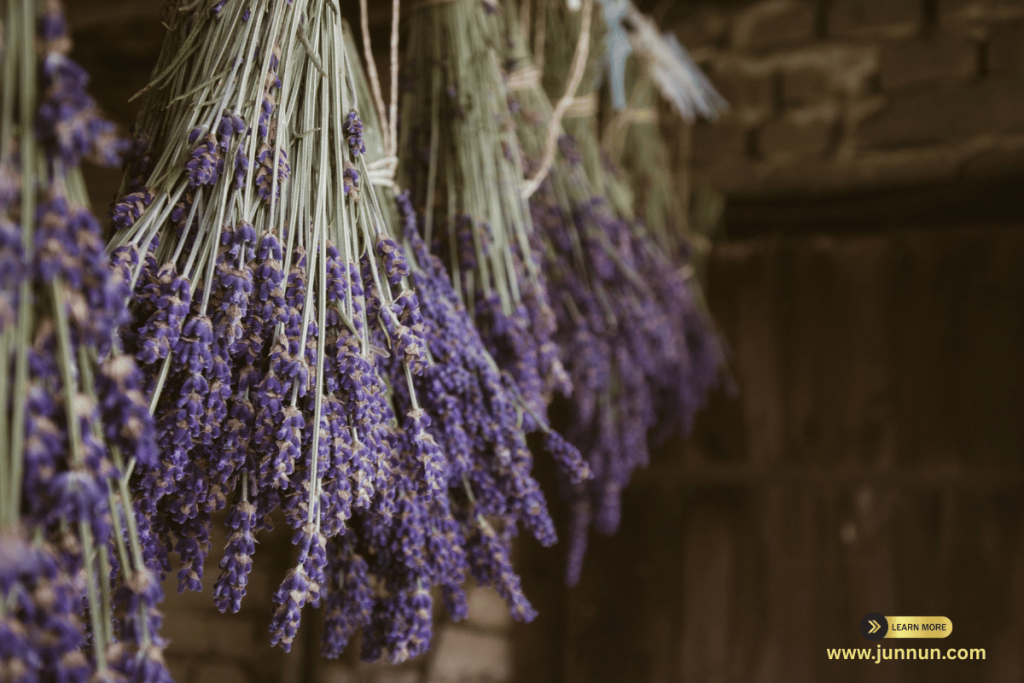
- Provide Plenty of Sunlight: Lavender thrives in full sun and needs at least 6-8 hours of direct sunlight daily. Choose a sunny spot on your balcony or garden to promote healthy growth, vibrant colour, and abundant fragrant blooms.
- Use Well-Draining Soil: Lavender prefers light, well-draining, slightly alkaline soil. Ensure your potting mix or garden soil drains well, as lavender is susceptible to root rot in waterlogged conditions.
- Water Sparingly: Lavender is drought-tolerant and doesn’t need frequent watering. Allow the soil to dry out between waterings, and avoid overwatering. Water deeply but infrequently to encourage deep root growth.
- Prune Regularly: To keep lavender plants compact and healthy, prune them back after flowering. Trim the stems by about one-third to encourage new growth and prevent the plant from becoming woody.
- Fertilise Lightly: Lavender doesn’t require heavy feeding. Once in early spring, use a balanced, slow-release fertiliser or apply organic compost. Avoid excessive nitrogen, which can lead to lush foliage but fewer blooms.
Pro Tip: Follow these tips to help your lavender thrive, giving fragrant flowers and a lovely touch to your balcony garden!
7. Chilli Peppers
Chilli peppers are spicy fruits packed with flavour and heat. They come in various colours, including red, green, and yellow. Rich in vitamins A and C, chilli peppers boost metabolism, enhance digestion, and add a fiery kick to dishes in cuisines worldwide.
They are also a great option for small-space gardening, bringing both taste and colour to limited areas.
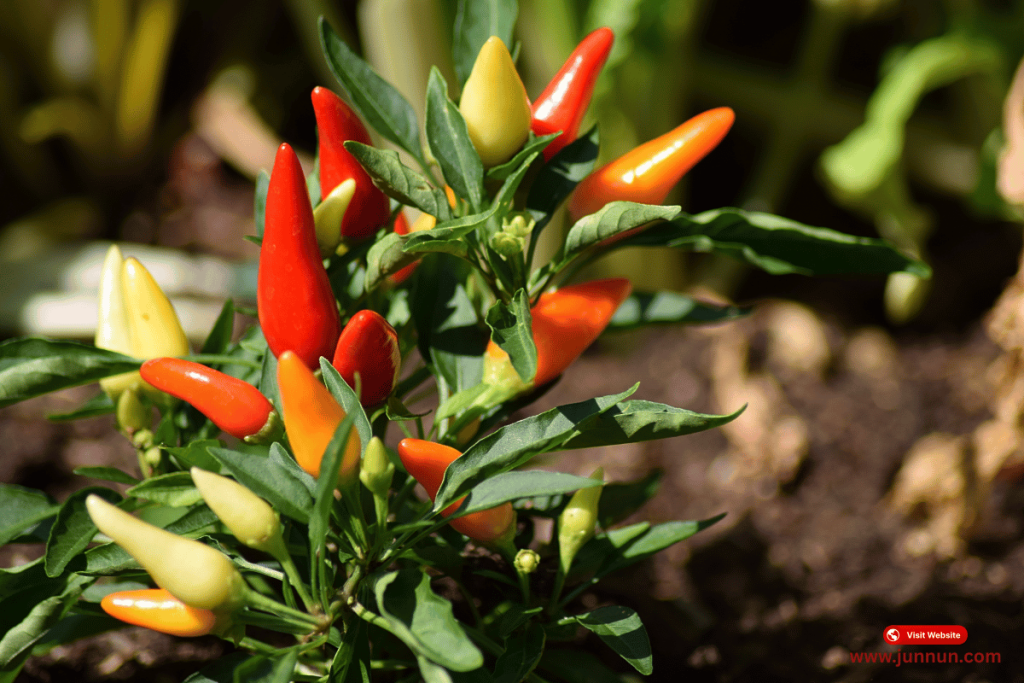
- Provide Plenty of Sunlight: Chilli peppers need at least 6–8 hours of direct sunlight daily to thrive and produce flavorful fruit, making gardening on balconies in apartments highly rewarding and enjoyable.
- Water Consistently, But Not Excessively: Keep the soil evenly moist, but avoid overwatering. Water the plant when the top inch of soil feels dry, but ensure the container has good drainage to prevent waterlogged roots.
- Use Well-Draining, Nutrient-Rich Soil: Chilli peppers prefer well-draining, loamy soil rich in organic matter. A balanced potting mix with added compost works well. Avoid heavy, clayey soils that can trap excess moisture.
- Fertilise Regularly: Feed your chilli pepper plants with a balanced, water-soluble fertiliser every 2-3 weeks during the growing season. Switch to a phosphorus-rich fertiliser to encourage fruit production when the plant starts flowering.
- Support the Plants: As chilli peppers grow, they may need support to keep the stems upright, especially when they begin bearing fruit. Use stakes or small cages to support the plants and prevent them from toppling over. With the right care, you can enjoy a steady supply of fresh, homegrown chilli peppers even in compact spaces.
Pro Tip: Following these tips, you’ll have healthy chilli pepper plants that produce a bountiful harvest!
8. Ferns (Boston Fern or Maidenhair Fern)
Ferns are vibrant green plants recognised for their delicate, feathery fronds. They thrive in shady, humid environments and are often used in indoor gardens. Ferns enhance decor with a natural touch, improve air quality, and require minimal maintenance, making them a popular choice for indoor spaces. With their adaptability, they are also suitable for gardening on balconies in apartments, bringing freshness and greenery to small spaces while creating a relaxing, healthy, and beautiful living environment.
Additionally, gardening on balconies in apartments with ferns can effectively enhance beauty, relaxation, and overall well-being.
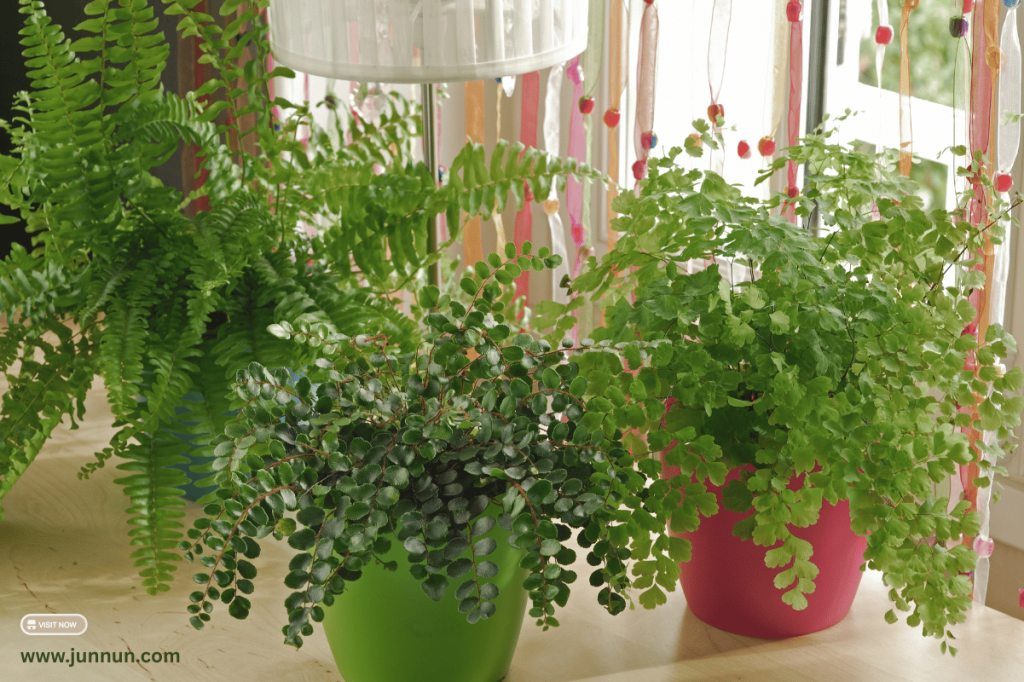
- Provide Indirect Light: Ferns prefer bright, indirect sunlight. Avoid direct sunlight, as it can scorch their delicate leaves—a spot near a window with filtered light works best for most fern varieties.
- Keep the Soil Moist: Ferns thrive in consistently moist, but not soggy, soil. Water regularly, ensuring the soil doesn’t dry out completely between waterings. Always allow the soil to dry slightly before watering again to prevent overwatering.
- Maintain Humidity: Ferns love high humidity. If the air in your home is dry, especially during winter, mist the leaves regularly or place a humidity tray (a shallow tray filled with water and pebbles) beneath the plant to increase moisture in the air.
- Fertilise Lightly: Fertilise your ferns with a diluted, balanced liquid fertiliser about once a month during the growing season (spring and summer). Avoid over-fertilising, as this can lead to weak, leggy growth.
- Use Well-Draining Soil: Ferns prefer soil that retains moisture while also draining well. To improve drainage while maintaining adequate moisture levels, use a peat-based potting mix or add perlite to the soil. With the right care, ferns thrive beautifully, making them an excellent choice for small-space gardening.
Pro Tip: By following these tips, your ferns will flourish, adding a lush, green touch to your indoor or balcony garden.
Final Tips for Balcony Gardening
- Maximise Vertical Space: Hanging pots, shelves, and vertical planters to maximise space efficiently and beautifully.
- Choose Lightweight Containers: This helps avoid overloading the balcony structure and ensures safety, stability, and long-lasting durability for residents and outdoor gardening activities…
- Invest in Good Soil: A high-quality potting mix ensures better plant health.
- Add a Watering Schedule: Consistent care is crucial for maintaining healthy plants, promoting steady growth, resilience, and long-lasting vitality.
- Incorporate Décor: Decorative pots and arrangements can enhance the aesthetic appeal, creating vibrant, stylish, and inviting balcony spaces.
- Use Well-Draining Soil: Good drainage is crucial for healthy plants. Choose a high-quality potting mix, and ensure containers have drainage holes to prevent waterlogging.
- Keep Pests in Check: Regularly inspect your plants for pests and diseases. Use organic pest control methods, such as neem oil or introducing beneficial insects like ladybugs, to protect your plants naturally.
- Consider Seasonal Changes: Be mindful of the changing seasons. Some plants may need to be moved indoors during cold months or given extra shade during the hottest part of the year.
These tips will help you create a thriving, beautiful garden on your apartment balcony, regardless of the space’s size.
Conclusion
Gardening on balconies in apartments is an achievable and rewarding endeavour.
By selecting the perfect plants, you can create a vibrant, functional, and beautiful green space even in the heart of the city. From flavorful herbs to colourful flowers and nutritious vegetables, there are limitless possibilities for what you can grow with some careful planning and attention.
Begin with small steps, try different plants, and watch as your balcony transforms into a vibrant garden.
Frequently Asked Questions (FAQ)
1. What are the best plants for small apartment balconies?
Some of the best plants for small balconies include herbs (basil, mint, thyme), succulents (aloe vera, jade plant), and vegetables like tomatoes. These plants thrive in compact spaces and are easy to care for.
2. Can I grow herbs like basil and mint on a balcony?
Yes! Basil, mint, parsley, and thyme grow very well in balcony gardens. They require 4–6 hours of sunlight, well-draining soil, and regular pruning to stay healthy and productive.
3. Are succulents good for balcony gardening in apartments?
Absolutely. Succulents like aloe vera, jade, and echeveria are perfect for balconies because they need minimal water, thrive in sunlight, and add a stylish, decorative touch.
4. How much sunlight do balcony plants need?
It depends on the plant. Herbs usually need 4–6 hours of sunlight, while tomatoes require 6–8 hours daily. Succulents prefer bright, indirect light for healthy growth.
5. Can I grow tomatoes successfully in a balcony garden?
Yes, tomatoes can be grown in pots or containers on balconies. They need full sunlight, regular watering, proper drainage, and support with stakes or cages for strong, productive growth.
6. What type of soil is best for balcony plants?
Use well-draining soil to prevent root rot. For herbs, a quality potting mix with perlite or sand works best, while succulents thrive in cactus or succulent-specific soil.
7. How do I prevent overwatering balcony plants?
Check the top inch of soil before watering. If it feels dry, water the plant. Ensure your pots have drainage holes so excess water can escape, preventing root rot.
8. Why is balcony gardening good for health and well-being?
Balcony gardening reduces stress, promotes relaxation, improves air quality, and provides fresh herbs and vegetables. It’s a sustainable way to stay connected with nature, even in small apartments.


Absolutely! Marketing plays a crucial role in helping small businesses build strong customer relationships. By engaging directly with their audience, businesses not only boost retention but also create opportunities to increase conversions and long-term growth
我来了,我走了,我又来了,我又走了,你揍我啊
We warmly welcome your presence. Whether it is a brief visit or a return, we are always delighted to see you.
Wishing you happiness every day.
Thanks a lot.
Absolutely! Finding balance between professional and personal life is essential for true success. I love how this guide focuses on practical, science-backed strategies that help us stay calm, focused, and productive in any situation
Exactly! No matter the size of the business, positioning your brand effectively is the key to standing out and achieving sustainable growth. It’s inspiring to see how this article highlights the importance of strategic brand positioning for every stage of business success.
Hello friends!
I came across a 143 awesome website that I think you should take a look at.
This resource is packed with a lot of useful information that you might find helpful.
It has everything you could possibly need, so be sure to give it a visit!
https://newsblaze.co.ke/11-steps-to-get-away-from-overconsumption/
Additionally remember not to forget, guys, which a person constantly may inside this publication find answers to the the absolute confusing questions. Our team attempted to present all of the data via the most understandable method.
Hello team!
I came across a 143 valuable resource that I think you should browse.
This tool is packed with a lot of useful information that you might find valuable.
It has everything you could possibly need, so be sure to give it a visit!
https://kscripts.com/general/how-to-organize-your-finances-3-ways-everyone-can-use.html
And remember not to forget, guys, which a person always may within the piece discover answers to address the most the very confusing queries. We attempted to explain the complete information via the most extremely understandable way.